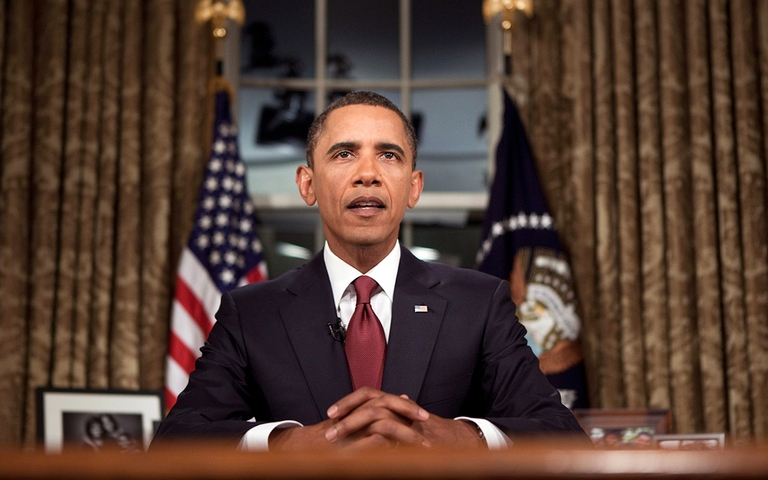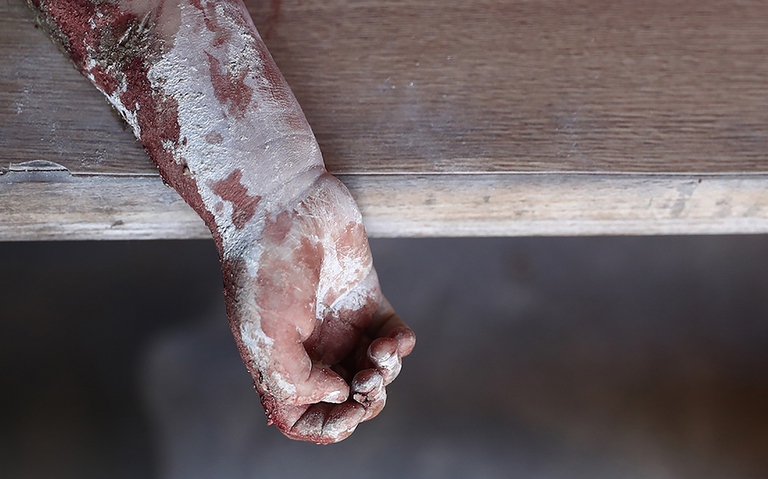
As per tradition after 12 years India held Mahakumbh, the world’s largest spiritual congregation that has been attracting pilgrims from across the globe.
Gli Stati Uniti hanno sganciato oltre 26mila bombe nell’ultimo anno di presidenza Obama. Obiettivo primario: eliminare lo Stato Islamico dalle mappe.
Much has been said and written about Barack Obama’s 8 years of presidency. Many have praised his rhetoric and ability to speak and give people hope. Many articles have been published, including the Obama Doctrine, an essay about the US President’s foreign politics written by Jeffrey Goldberg, which could be considered as the most significant piece. Over the years Goldberg, editor in chief at The Atlantic, has followed President Obama closely, since the Nobel Peace Prize award in 2009, and had many occasions to talk with him about geopolitics. What emerges is a strong non-intervention approach, so much so that some political opponents accused Obama of being weak if compared to other characters of the international scenario – Russian President Vladimir Putin above all.
Data gathered and published on Micah Zenko’s blog in the Council on Foreign Relations (CFR), though, call into question such idea. Barack Obama has actually reduced ground troops in Iraq and Afghanistan consistently, bringing the number of soldiers deployed from 187,900 in 2008 (the last year of George W. Bush’s presidency) to 12,559 of today.
At the same time, however, President Obama has cleared the so called targeted interventions, aerial operations carried out by the United States aimed at destroying precise objectives. These operations were mainly airstrikes, including carried out with drones, which avoided the deployment of troops in hostile territories, but concretely contributed to wars and conflicts to continue.
The bombs dropped by the United States in 2016 account for 26,172 (3,028 more bombs than in 2015). This means 72 bombs were dropped each day, 3 per hour. 93 per cent (24,287) of the bombs were dropped in only two countries, Iraq and Syria, and represent 79 per cent (5,904) of the total strikes (7,473) carried out with 30,743 bombs of Combined Joint Task Force–Operation Inherent Resolve (CJTF-OIR), an international coalition established to eliminate the Islamic State (DAESH) in the area that also includes local armed forces like Kurdish peshmerga and the Iraqi aviation.
On average, each strike requires 4 bombs (or other munitions), according to Zenko’s data. Indeed, “to determine how many U.S. bombs were dropped on each Iraq and Syria, we looked at the percentage of total U.S. OIR airstrikes conducted in each country. They were nearly evenly split, with 49.8 percent (or 2,941 airstrikes) carried out in Iraq, and 50.2 percent (or 2,963 airstrikes) in Syria. Therefore, the number of bombs dropped were also nearly the same in the two countries (12,095 in Iraq; 12,192 in Syria)”.
| Numero di centrali a carbone in Italia | 12 (fonte: Assocarboni) |
| Fabbisogno elettrico soddisfatto rispetto al totale | 13,5% nel 2014 (fonte: Terna) |
| Decessi prematuri dovuti al carbone | 521 all'anno (fonte: Università di Stoccarda, 2010 - Greenpeace) |
| Emissioni di CO2 | 39 milioni di tonnellate all'anno, pari al 40% prodotto dal sistema elettrico nazionale |
The remaining bombs (1,885 bombs accounting for 7 per cent) were dropped in 5 other countries: Afghanistan, Yemen, Somalia, Pakistan, and Libya. This means that 7 countries were attacked in total, one more than in 2015 (Libya), while George W. Bush targeted only 4 (Afghanistan, Iraq, Pakistan e Somalia). A tweet by New Yorker journalist Ryan Lizza highlighted this gap in 2014.
Countries bombed:
Obama 7, Bush 4— Ryan Lizza (@RyanLizza) September 23, 2014
These figures recall 2013 documentary Dirty Wars, featuring journalist Jeremy Scahill travelling from Afghanistan to Yemen, passing through Somalia, to talk with civilians. They’re defined as collateral damages when killed by accident and are the defenceless victims of the airstrikes conducted to hunt down terrorists, fundamentalists and other enemies of the United States. Civilian casualties accounted for 64 to 116 from 2009 to 2015 according to government sources, but the Bureau of Investigative Journalism claims innocent victims accounted for 380 to 801.
It will take some time, maybe years, to really understand the world Obama left us. A world that seems characterised by a state of permanent war. In any case, the quality of this legacy musn’t overlook the consequences his decisions had on human beings of other nationalities.
Siamo anche su WhatsApp. Segui il canale ufficiale LifeGate per restare aggiornata, aggiornato sulle ultime notizie e sulle nostre attività.
![]()
Quest'opera è distribuita con Licenza Creative Commons Attribuzione - Non commerciale - Non opere derivate 4.0 Internazionale.
As per tradition after 12 years India held Mahakumbh, the world’s largest spiritual congregation that has been attracting pilgrims from across the globe.
Workers in tea gardens of West Bengal, India, that produces Ctc tea for domestic consumption complain that they have been devoid of basic facilities while political parties make hollow promises during every elections which are never fulfilled.
India is in the middle of the elections, but sadly none of the politicians have uttered a word on man-animal conflict that has been devouring several lives every year.
Manipur, a state in north-east India, is still reeling under the tremors of violence that broke out last year devouring lives and paralyzing the economy.
The government of Tanzania is currently planning to evict more than 80.000 indigenous Maasai people from their ancenstral land
A new UNU-INWEH report on the global bottled water industry reveals the massive scale of this market and the lack of strict quality controls.
Isatou Ceesay founded a social enterprise that is helping to fight plastic pollution and empowering women and young people to gain economic independence.
In 2020, Mihela Hladin made a radical decision that many, in recent times, have probably considered. This is her story, with photos by Matt Audiffret.
The Brazilian government has started evicting illegal gold miners, responsible for the health emergency that has hit the Yanomami people.









